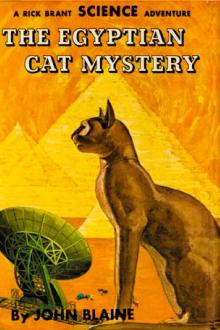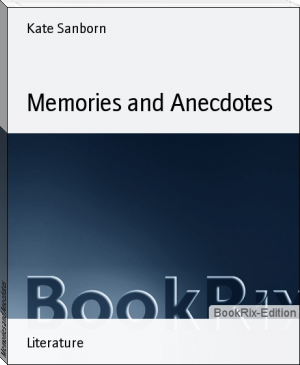Anecdotes of Painters, Engravers, Sculptors and Architects and Curiosities of Art (Vol. 3 of 3) by S. Spooner (best ebook reader under 100 TXT) 📖

- Author: S. Spooner
Book online «Anecdotes of Painters, Engravers, Sculptors and Architects and Curiosities of Art (Vol. 3 of 3) by S. Spooner (best ebook reader under 100 TXT) 📖». Author S. Spooner
to see it, that he set off immediately, on foot, to Cortona, dressed as
he was in his mantle, hood, and wooden shoes, without communicating his
purpose to any one. Finding that Donatello had not been too lavish of
his praise, he drew the vase, returned to Florence, and surprised his
friends with the accurate drawing he had made, before they knew of his
departure, they believing that he must be occupied with his inventions.
This urn, or funeral vase, according to the Florentine editors of
Vasari, is still in the Cathedral of Cortona. The sculptures represent
the Battle of the Centaurs and Lapithæ, or as some say, a Warlike
Expedition of Bacchus. The design and workmanship are exquisite. It was
found in a field without the city, and almost close to the Cathedral.
BRUNELLESCHI AND DONATELLO.
"Among other works," says Vasari, "Donato received an order for a
crucifix in wood, for the church of Santa Croce at Florence, on which he
bestowed extraordinary labor. When the work was completed, believing
himself to have produced an admirable thing, he showed it to Filippo di
Ser Brunellesco, his most intimate friend, desiring to have his opinion
of it. Filippo, who had expected from the words of Donato, to see a much
finer production, smiled somewhat as he regarded it, and Donato seeing
this, entreated him by the friendship existing between them, to say what
he thought of it. Whereupon Filippo, who was exceedingly frank, replied
that Donatello appeared to him to have placed a clown on the cross, and
not a figure resembling that of Jesus Christ, whose person was
delicately beautiful, and in all parts the most perfect form of man that
had ever been born. Donato hearing himself censured where he had
expected praise, and more hurt than he was perhaps willing to admit,
replied, 'If it were as easy to execute a work as to judge it, my figure
would appear to thee to be Christ and not a boor; but take wood, and try
to make one thyself.' Filippo, without saying anything more, returned
home, and set to work on a crucifix, wherein he labored to surpass
Donato, that he might not be condemned by his own judgment; but he
suffered no one to know what he was doing. At the end of some months,
the work was completed to the height of perfection, and this done,
Filippo one morning invited Donato to dine with him, and the latter
accepted the invitation. Thereupon, as they were proceeding together
towards the house of Filippo, they passed by the Mercato Vecchio, where
the latter purchased various articles, and giving them to Donato, said,
'Do thou go forward with these things to the house, and wait for me
there; I'll be after thee in a moment.' Donato, therefore, having
entered the house, had no sooner done so than he saw the crucifix, which
Filippo had placed in a suitable light. Stopping short to examine the
work, he found it so perfectly executed, that feeling himself conquered,
full of astonishment, and, as it were startled out of himself, he
dropped the hands which were holding up his apron, wherein he had placed
the purchases, when the whole fell to the ground, eggs, cheese, and
other things, all broken to pieces and mingled together. But Donato, not
recovering from his astonishment, remained still gazing in amazement and
like one out of his wits when Filippo arrived, and inquired, laughing,
'What hast thou been about, Donato? and what dost thou mean us to have
for dinner, since thou hast overturned everything?' 'I, for my part,'
replied Donato, 'have had my share of dinner for to-day; if thou must
needs have thine, take it. But enough said: to thee it has been given to
represent Christ; to me, boors only.'" This crucifix now adorns the
altar of the chapel of the Gondi.
DONATELLO.
This old Florentine sculptor was born in 1383. He was the first of the
moderns who forsook the stiff and gothic manner, and endeavored to
restore to sculpture the grace and beauty of the antique. He executed a
multitude of works in wood, marble and bronze, consisting of images,
statues, busts, basso-relievos, monuments, equestrian statues, etc.
which gained him great reputation, and some of which are much esteemed
at the present day. He was much patronized by Cosmo de' Medici, and his
son Pietro.
Among Donatello's principal works, are three statues, each three braccia
and a half high, (Vasari erroneously says four, and each five braccia
high), for the façade of the church of Santa Maria del Fiore, which
faces the Campanile. They represent St. John; David, called Lo Zuccone
(so called, because bald-headed); and Solomon, or as some say, the
prophet Jeremiah. The Zuccone is considered the most extraordinary and
the most beautiful work ever produced by Donatello, who, while working
on it, was so delighted with his success, that he frequently exclaimed,
"Speak then! why wilt thou not speak?" Whenever he wished to affirm a
thing in a manner that should preclude all doubt, he would say, "By the
faith I place in my Zuccone."
DONATELLO AND THE MERCHANT.
A rich Genoese merchant commissioned Donatello to execute his bust in
bronze, of life size. When the work was completed, it was pronounced a
capital performance, and Cosmo de' Medici, who was the friend of both
parties, caused it to be placed in the upper court of the palace,
between the battlements which overlook the street, that it might be seen
by the citizens. When the merchant, unacquainted with the value of such
works, came to pay for it, the price demanded appeared to him so
exorbitant that he refused to take it, whereupon the mutter was referred
to Cosmo. When the latter sought to settle the difference, he found the
offer of the merchant to be very far from the just demand of Donatello,
and turning towards him, observed that he offered too small
compensation. The merchant replied that Donatello could have made it in
a month, and would thus be gaining half a florin a day (about one
dollar). Donatello, disgusted and stung with rage, told the merchant
that he had found means in the hundredth part of an hour to destroy the
whole labor and cures of a year, and knocked the bust out of the window,
which was dashed to pieces on the pavement below, observing, at the same
time, that "it was evident he was better versed in bargaining for
horse-beans than in purchasing statues." The merchant now ashamed of his
conduct, and regretting what had happened, offered him double his price
if he would reconstruct the bust,--but Donatello, though poor, flatly
refused to do it on any terms, even at the request of Cosmo himself.
DONATELLO AND HIS KINSMAN.
When Donatello was very sick, certain of his kinsfolk, who were well to
do in the world, but had not visited him in many years, went to condole
with him in his last illness. Before they left, they told him it was
his duty to leave to them a small farm which he had in the territories
of Prato, and this they begged very earnestly, though it was small and
produced a very small income. Donatello, perceiving the motive of their
visit, thus rebuked them: "I cannot content you in this matter, kinsmen,
because I resolve--and it appears to me just and proper--to leave the
farm to the poor husbandman who has always tilled it, and who has
bestowed great labor on it; not to you, who without ever having done
anything for it, or for me, but only thought of obtaining it, now come
with this visit of yours, desiring that I should leave it to you. Go!
and the Lord be with you."
DEATH OF DONATELLO.
Donatello died on the 13th of December, 1466. He was buried with great
pomp and solemnity in the church of San Lorenzo, near the tomb of Cosmo,
as he himself had commanded (for he had purchased the right), "to the
end," as he said, "that his body might be near him when dead, as his
spirit had ever been near him when in life." Bottari observes that
another reason for his choice of San Lorenzo, may have been that many of
his works were in that church.
DONATELLO AND MICHAEL ANGELO COMPARED.
"I will not omit to mention," says Vasari, "that the most learned and
very reverend Don Vincenzio Borghini, of whom we have before spoken in
relation to other matters, has collected into a large book, innumerable
drawings of distinguished painters and sculptors, ancient as well as
modern, and among these are two drawings on two leaves opposite to each
other, one of which is by Donato, and the other by Michael Angelo
Buonarroti. On these he has with much judgment inscribed the two Greek
mottos which follow; on the drawing of Donato, "[Greek: Ê Donatos
Bonarrotixei]," and on that of Michael Angelo, "[Greek: Ê Bonarrotos
Donatixei]," which in Latin ran thus: _Aut Donatus Bonarrotom exprimit et
refert, aut Bonarrotus Donatum_; and in our language they mean, 'Either
the spirit of Donato worked in Buonarroti, or that of Buonarroti first
acted in Donato.'"
SOFONISBA ANGUISCIOLA'S EARLY DISTINCTION.
This noble lady of Cremona (born about 1530), was one of six sisters,
all amiable, and much distinguished in arts and letters. She displayed a
taste for drawing at a very early age, and soon became the best pupil in
the school of Antonio Campi. One of her early sketches, of a boy caught
with his hand in the claw of a lobster, with a little girl laughing at
his plight, was in possession of Vasari, and by him esteemed worthy of a
place in a volume which he had filled with drawings by the most famous
masters of that great age. Portraiture was her chief study; and Vasari
commends a picture which he saw at her father's house, of three of the
sisters, and an ancient housekeeper of the family playing at chess, as a
work "painted with so much skill and care, that the figures wanted only
voice to appear alive." He also praises a portrait which she painted of
herself, and presented to Pope Julius III., who died in 1555, which
shows that she must have attracted the notice of princes while yet in
her girlhood. At Milan, whither she accompanied her father, she painted
the portrait of the Duke of Sessa, the Viceroy, who rewarded her with
four pieces of brocade and various rich gifts.
SOFONISBA'S VISIT TO SPAIN.
Her name having become famous in Italy, in 1559, the King of Spain
ordered the Duke of Alba, who was then at Rome, to invite her to the
court of Madrid. She arrived there in the same year, and was received
with great distinction, and lodged in the palace. Her first work was the
portrait of the king, who was so much pleased with the performance that
he rewarded her with a diamond worth 1500 ducats, and settled upon her a
pension of 200 ducats. Her next sitters were the young queen Elizabeth
of Valois, known in Spain as Isabel of the Peace, then in the bloom of
bridal beauty, and the unhappy boy, Don Carlos. By the desire of Pope
Pius IV., she made a second portrait of the Queen, sent to his Holiness
with a dutiful letter, which Vasari has preserved, as well as the
gracious reply of the pontiff, who assures her that her painting shall
be placed among his most precious treasures. Sofonisba held the post of
lady-in-waiting to the queen, and was for some time governess to her
daughter, the Infanta Isabella Clara Eugenia,--an appointment which
proves that she must have resided in Spain for some time after 1566, the
year of that princess' birth.
SOFONISBA'S MARRIAGES.
Her royal patrons at last married their fair artist, now arrived to a
mature age, to Don Fabrizio de Moncada, a noble Sicilian, giving her a
dowry of 12,000 ducats and a pension of 1,000, besides many rich
presents in tapestries and jewels. The newly wedded pair retired to
Palermo, where the husband died some years after. Sofonisba was then
invited back to the court of Madrid, but excused herself on account of
her desire to see Cremona and her kindred once more. Embarking for this
purpose on board of a Genoese galley, she was entertained with such
gallant courtesy by the captain, Orazio Lomellini, one of the merchant
princes of the "city of Palaces," that she fell in love with him, and,
according to Soprani, offered him her hand in marriage, which he
accepted. On hearing of her second nuptials, their Catholic Majesties
added 400 crowns to her pension.
SOFONISBA'S RESIDENCE AT GENOA, AND HER INTERCOURSE WITH VANDYCK.
After her second marriage, Sofonisba continued to pursue the art at
Genoa, where her house became the resort of all the polished and
intellectual society of the Republic. The Empress of Germany paid her a
visit on her way to Spain, and accepted a little picture,--one
 Have you ever thought about what fiction is? Probably, such a question may seem surprising: and so everything is clear. Every person throughout his life has to repeatedly create the works he needs for specific purposes - statements, autobiographies, dictations - using not gypsum or clay, not musical notes, not paints, but just a word. At the same time, almost every person will be very surprised if he is told that he thereby created a work of fiction, which is very different from visual art, music and sculpture making. However, everyone understands that a student's essay or dictation is fundamentally different from novels, short stories, news that are created by professional writers. In the works of professionals there is the most important difference - excogitation. But, oddly enough, in a school literature course, you don’t realize the full power of fiction. So using our website in your free time discover fiction for yourself.
Have you ever thought about what fiction is? Probably, such a question may seem surprising: and so everything is clear. Every person throughout his life has to repeatedly create the works he needs for specific purposes - statements, autobiographies, dictations - using not gypsum or clay, not musical notes, not paints, but just a word. At the same time, almost every person will be very surprised if he is told that he thereby created a work of fiction, which is very different from visual art, music and sculpture making. However, everyone understands that a student's essay or dictation is fundamentally different from novels, short stories, news that are created by professional writers. In the works of professionals there is the most important difference - excogitation. But, oddly enough, in a school literature course, you don’t realize the full power of fiction. So using our website in your free time discover fiction for yourself. 




Comments (0)